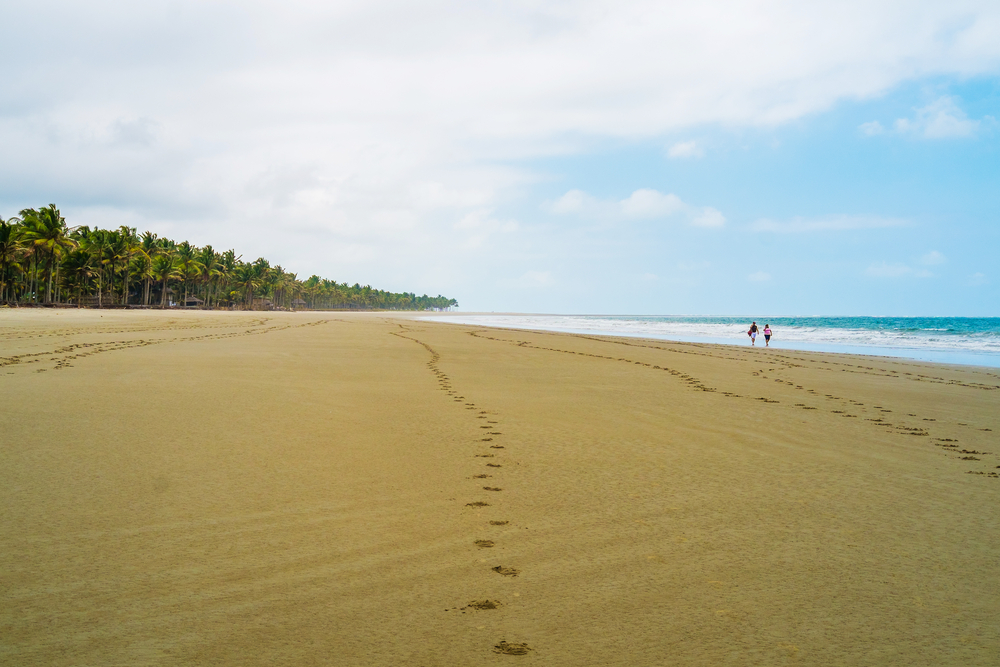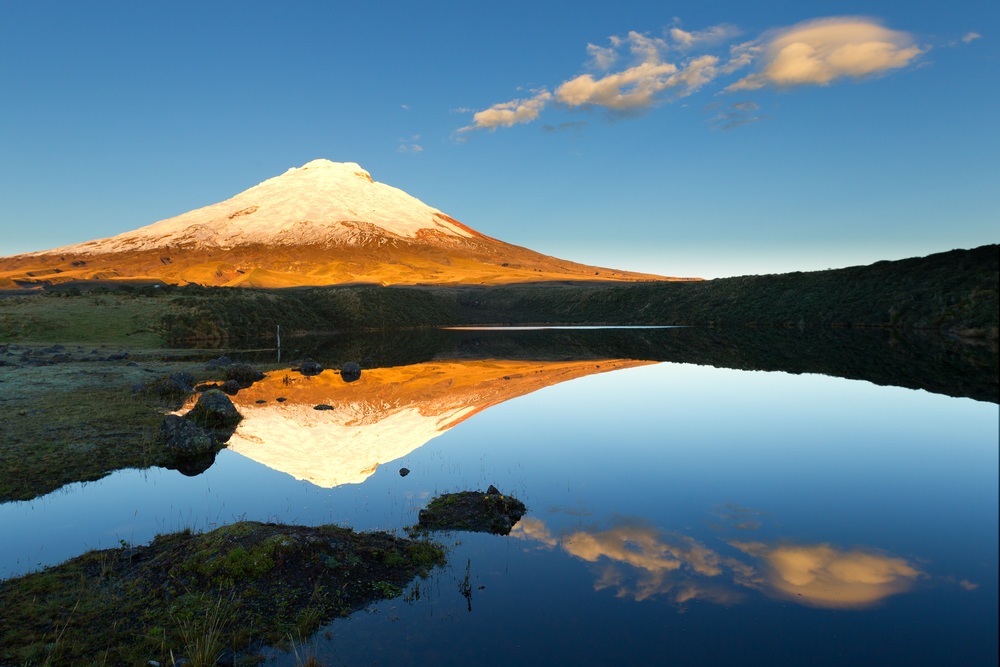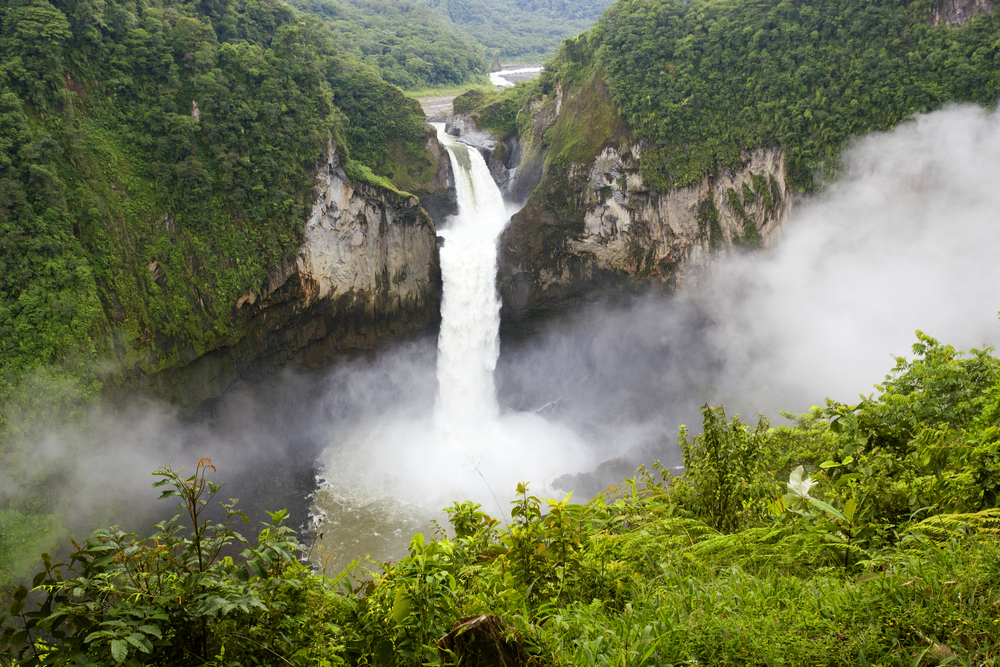Geography of Ecuador
Despite its relatively small size, Ecuador has a varied and interesting geography with a range of natural formations. These range from the plains of the Amazon Basin to the snow-capped peaks of the Andes and even a patch of desert-like coast in the south. Volcanoes are scattered across the country but the most well-known volcanoes are the active Cotopaxi Volcano, Pichincha Volcano at 4,784 metres, the highest, Chimborazo at over 6,000 metres and the most active, Sangay. There are cloud forests, hot springs and thermal pools all waiting to be explored in this diversely scenic country. And then of course there are the rugged but beautiful volcanic islands of the Galapagos that are also part of Ecuador.
Ecuador is located on the western side of South America, with the Pacific Ocean to the west and bordering Colombia in the north and Peru in the east and south. It borders the Pacific Ocean at the Equator – hence its name – Ecuador.
The mainland is divided into three geographical regions – La Costa (coast), La Sierra (central highlands) and El Oriente (eastern jungle), extending the length of the country from north to south and separated by the Andes Mountains. The Galapagos Islands form the fourth zone.
Geography of Ecuador:
La Costa

The coastal region extends from the Pacific to the foothills of the Andes Mountains that lie to the east, the coastline stretching for over 2,200 kilometres from Colombia to Peru. The forest fragments that remain are known as the Pacific Equatorial Forest and include tropical dry forest, tropical wet forest, tropical moist evergreen forest, cloud forest and mangrove forest.
La Sierra

The Andes form a mountainous spine running north to south through the country and include several peaks over 5,000 metres and over 20 above 4,000 metres. The central highland region consists of two main ranges (Central and Western Cordillera) separated by a narrow central valley. The cities of Quito, Cuenca and Riobamba all lie within basins in amongst the mountains of La Sierra. The snow-capped volcanic mountains of Chimborazo (6,278 metres) and Cotopaxi (5,978 metres) are also found in this geographical region.
El Oriente

The forest-covered slopes to the east of the Andes descend to the tropical rainforest of the Oriente or Amazon region interspersed by tributaries of the Amazon River. The rainforest extends into northern Peru and to Brazil’s eastern coast. The Rio Napo is Ecuador’s longest river extending for over 850 kilometres. Despite its vast area, the Oriente is sparsely populated.
The Galapagos

The Galapagos Islands are an archipelago of volcanic islands in the Pacific Ocean. They lie either side of the Equator and 1,000 kilometres west of mainland Ecuador. The islands cover a land area of nearly 8,000 square kilometres. The landscape is strikingly rugged with high volcanic mountains, craters, cliffs and lowlands. A great place to experience not only the fascinating geography but also the unique and abundant wildlife.
Chimu Adventures offers tailor-made trips to Ecuador plus all encompassing trips to Central America / South America, we are the Latin America Specialist. Click here more for information about Chimu.

Talk to one of our experienced Destination Specialists to turn your Antarctic, Arctic and South American dream into a reality.
Contact us